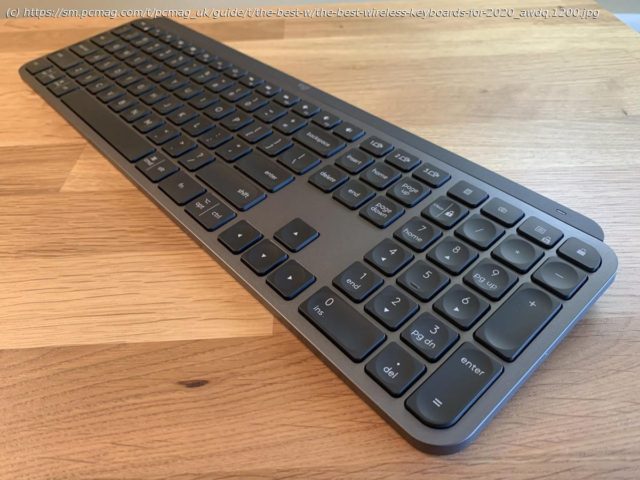Decluttering your desk? Looking to type from the couch? Here’s all the advice, nuances, and deep-dive reviews you need to pick the right wireless keyboard and keep your fingers happy.
How to Choose the Right Keyboard
Wireless keyboards serve a whole army of masters. They’re great if you’re trying to declutter, or like typing with your keyboard on your lap. Mobile productivity hounds who want gear that’s ready for travel swear by them, too, and some models let you swap one typing peripheral among desktops, laptops, and tablets. In the vast majority of situations, there’s no difference between using a keyboard with a wireless connection and a standard wired one. The only time you’ll notice is when it’s time to charge it…or when you forget to.
Apart from introducing a couple of new factors that you need to pay attention to (namely, connectivity and battery life), picking out the best wireless keyboard isn’t all that different from picking out the best keyboard overall. Hit that link for our best picks across wired and wireless models. But since you’re here, let’s go through the issues specific to wireless ones. Bluetooth? RF? There’s More Than One Way to Wireless
Wireless keyboards (and wireless mice, too) use two primary technologies to connect to devices: Bluetooth, or a 2.4GHz radio-frequency (RF) connection. The latter connects to your device via a USB dongle; Bluetooth models assume your host computer supports Bluetooth, or you have your own Bluetooth dongle. Each connection type offers distinct advantages and disadvantages.
In modern keyboards,2.4GHz RF offers a stable connection and, at times, a near-imperceptible amount of typing lag. No desktop or laptop has built-in support for these keyboards; you need that USB dongle. And because a USB dongle is an extra part, you can lose it if you swap it between systems often or carry your keyboard around. Some keyboards have a storage slot for their dongles, which is great, but it’s still a tiny part you need to keep track of. The dongles are often keyed to the specific keyboard you own, so losing one can mean the keyboard is out of commission for good. (Models that support a more forgiving RF dongle like one with Logitech’s Unifying technology can work off of a replacement dongle or another device’s dongle, but these are the exception, not the rule.)
Bluetooth connections, while also reliable, are slightly more prone to lag and/or momentary connection loss, especially when you have many Bluetooth connections going on in one place (such as an office or a coffee shop). These issues do resolve themselves and can often be fixed simply by re-establishing the connection if they don’t, but they can be an annoyance. Bluetooth also tends to drain a keyboard’s battery faster. On the plus side, though, devices with Bluetooth support can connect to phones, tablets, and other devices without a USB port.
The bottom line? It’s nice to have both. The 2.4GHz RF kind is generally the better connection type, especially if you’re planning on connecting to one, stationary PC. Bluetooth adds a lot of versatility, though. Not only can you connect to more devices, but having it is a nice safety if you forget the USB dongle. In keyboards made in the last two or three years, you’re most likely to see keyboards with just a 2.4GHz connection, though there are a few Bluetooth-only options, and some that support both. I would urge you, though, to not count out a keyboard just because it relies solely on Bluetooth, as you may not even notice a difference if you’re using it at home.
In addition to 2.4GHz and Bluetooth, any good wireless keyboard will allow you to connect to a device directly using its charging cable. Without this option, there’s always a chance that you’ll forget to charge the keyboard or replace its batteries, and you may find yourself, unexpectedly, temporarily unable to use it. Models that rely on disposable AA or AAA batteries, though, likely don’t have a USB connection option.
While it’s by no means a deal breaker, connecting via USB Type-C at the keyboard end is generally better than a micro-USB connection, as USB-C is easier to plug in and the port may allow for faster charging under some circumstances. What matters most, though, is that you have a cable option of some kind. The Power Source: Wireless-Keyboard Battery Life
Without a PC-connected cable to power it, every wireless keyboard, of course, needs a battery to run. Most wireless keyboards these days rely on built-in lithium-ion batteries you can recharge, though you do occasionally run into some that rely on good old AA or AAA cells.
While some keyboards that rely on the latter can get amazing battery life (Logitech’s K860 is rated to last for two years on a pair of AAAs), a keyboard with an internal battery and a charging cable is more convenient, because you can plug in while you recharge. There’s nothing worse than realizing that your keyboard is out of power, so you can’t use your PC until you run out to the store and pick up more batteries (or salvage some from a TV remote).
So, how long should a wireless keyboard battery last? For an internal battery, most keyboards in the last two years get at least 20 hours of continuous use with its key backlighting on (if it has key backlighting, that is). Many manufacturers provide two battery-life estimates based on whether or not you use the backlighting, as it can reduce the time between charges by more than 50 percent. In our review testing, we find 25 to 30 hours often translates to somewhere between one to two weeks of heavy daily use.
With removable AAs or AAAs, look for the estimated battery life to be measured in weeks or months, not hours. Even the cheapest battery-powered keyboards should get hundreds of hours of battery life from a set, especially if they do not have backlit keys.
Since LED backlighting heavily affects battery life, t’s good to look for customization and controls to help you manage power. Any backlit keyboard will let you turn these lights on and off, but some will offer extra options, such as brightness-level controls and the ability to automatically turn off the lights when the power gets low. Some configuration apps, like Corsair’s iCue, offer more universal power-related controls and features, like controlling when the board goes to “sleep,” and adding a system-level battery indicator. What About a Media Keyboard?
If you’re looking for a wireless keyboard because you’re setting up a media PC to hook up to your TV, keep in mind that there’s a subset of wireless keyboards made specifically with this use case in mind. Entertainment keyboards, sometimes called “media center keyboards” or « lapboards, » are all-in-one solutions made to work on your lap, rather than set on a surface.






